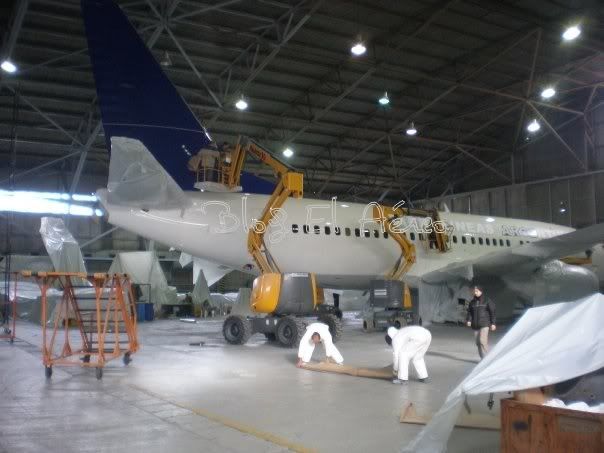While in Brazil, things are going well, although not the best, the airline began to have a sharp decline in its occupancy rates. The airline reported that average levels of the network began to drop below 50%.
After the start of the crisis, the airline GOL suffered a blow. The number of passengers declined significantly although during the first few months seemed to affect the airline's South American flights. However, the grip of recession in conjunction with the Influenza A H1N1, finished destroying employment levels of low-cost airline. In mid-June this year, the airline decided to cancel its route to Lima, Peru from Santiago de Chile, which was a continuation of the flight from Buenos Aires. As of August 15 this year, GOL will also unite Santiago de Chile to Buenos Aires, in what can only be called an attempt to regroup their flights in South America and mitigate what is a drain on the company.

financial crisis, the health and external constraints to the model in Latin America lowcost cause today, the gradual withdrawal of scoring for the regional market. Photo: Martín González.
Finally, if paid his departure from Chile, GOL will begin to review its 14 daily services to Argentina as the Brazilian ministers warning against travel to the country by the high rate of infection than influenza A H1N1 I was having within the country, traffic fell sharply in the Brazilian airline, weakening even more to lower levels than the same financial crisis had caused. This coupled with the fierce competition that exists on the routes between Brazil and Argentina, and the goodwill of Constantino de Oliveira Jr. to comply with an agreement with the federal government are forcing the first American budget airline to revise its model American business.
To date, GOL services in Argentina consist of:
6 flights daily between Buenos Aires and Sao Paulo.
2 flights daily between Buenos Aires and Rio de Janeiro.
2 flights daily between Buenos Aires and Porto Alegre.
2 flights daily between Buenos Aires and Santiago de Chile (canceled since 15/08/2009)
1 flight Rosary daily between Porto Alegre
1 flight daily between Cordoba and Porto Alegre
Oliveira Following the announcements this morning could be reduced significantly in the coming weeks, according to the reformulation of the strategies of low cost Brazilian international markets it operates.
In this sense, reducing Gol operations can be understood as an accumulation of factors, which not all relevant to the current state of the industry, and which derive more from the effects of the acquisition of Varig 2007, thought revive airline with a low cost model through which ensure success in a short time, a situation that did not happen, forcing the company to amend its scheme in various business opportunities in the international market. According to official figures from the ANAC, the international participation of GOL fell 13.86% for first half 2009 compared to 28.03% the previous period.
The current South American regional market structure has a series of restrictions on GOL's low cost model, which combined with an adverse situation the product of sustained low traffic and the consequences of the spread of H1N1 in countries, especially Argentina and the different realities of each country have combined to reverse of the company.
In summary, the model developed by GOL in addition to its limitation, was not sufficiently established as to sustain the beating that the financial crisis will tip the general aviation market.



